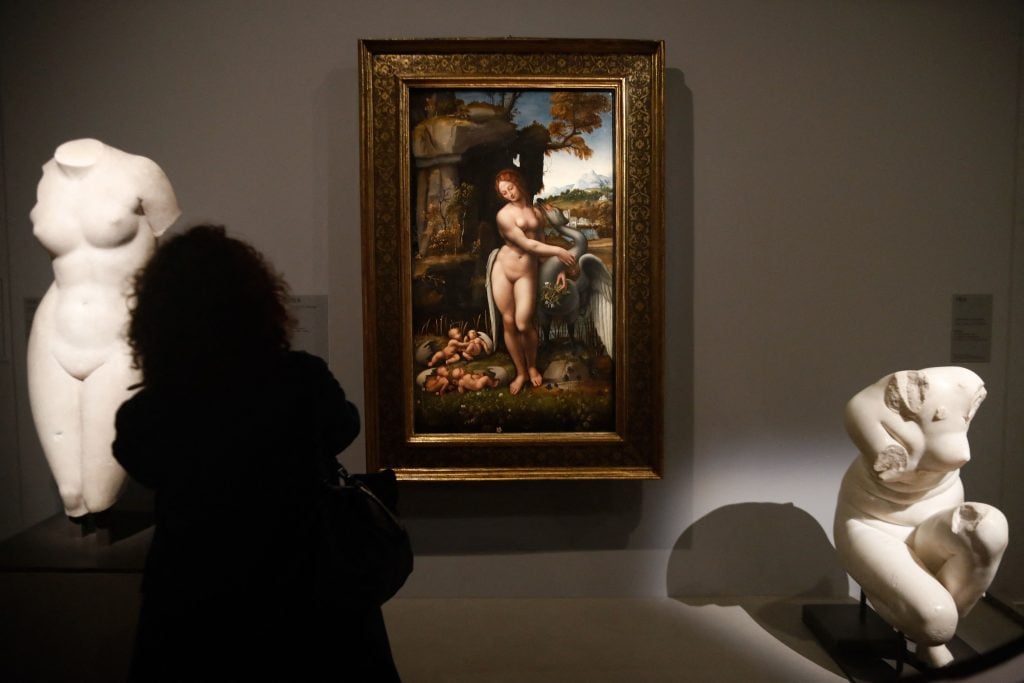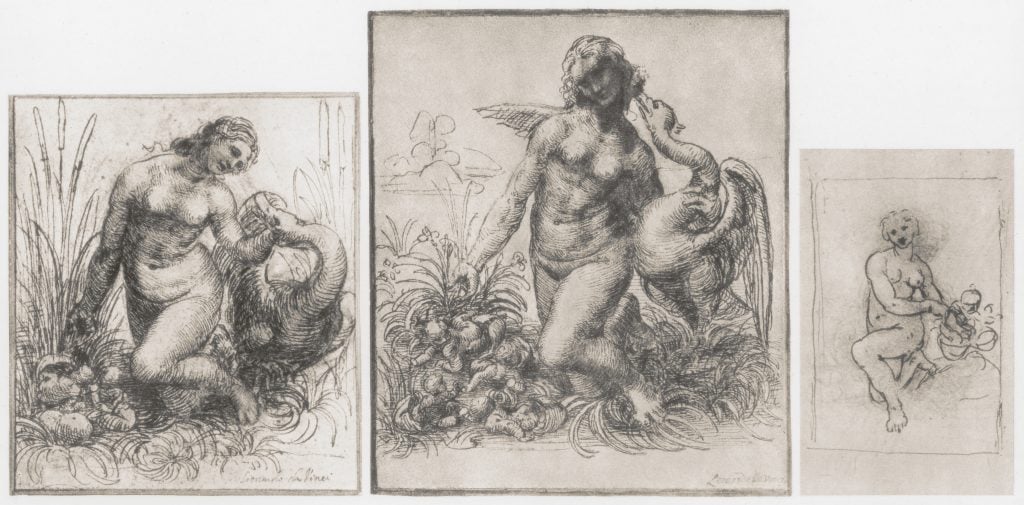Archaeology & History
The Hunt: Was Leonardo’s ‘Leda and the Swan’ Lost, or Never Completed?
No one alive has seen the work in person, but traces of it are scattered throughout history.

The Hunt explores art and ancient relics that are—alas!—lost to time. From the Ark of the Covenant to Cleopatra’s tomb, these legendary treasures have long captured the imaginations of historians and archaeologists, even if they remain buried under layers of sand, stone, and history.
In the Greek myth of Leda and the Swan, Zeus transforms into a fowl and forcibly impregnates the King of Sparta’s wife. The tale achieved notoriety throughout the Middle Ages particularly due to literary tellings by Ovid and Fulgentius. Michelangelo, Correggio, and da Vinci later gave the myth the Renaissance treatment. The story of Leda and the Swan surged in popularity again in the 19th and 20th centuries, portrayed by the likes of Cézanne and Cy Twombly. Both Michelangelo’s and Laonardo’s critical takes on Leda and the Swan were long lost by then.
History knows what Leonardo’s lost Leda looked like because artists copied the work in his wake. The three closest examples live in the Uffizi Gallery, the Galleria Borghese, and Wilton House. There’s also a smattering of surviving sketches beginning in 1504 for an original Leda painting that Leonardo ultimately never made. These sketches belie an evolution in the artist’s compositional approach, from depicting a seated, twisting Leda to the standing, demure figure cradling her swan partner in Leonardo’s eventual painting—finished in approximately 1508.

Leonardo Da Vinci’s sketches for Leda and the Swan (c. 1504-1506). Left, from the collection of Franz Koenigs; middle, from the collection of the Duke of Devonshire; right, from the collection of the Royal Library of England. Photo by Art Media/Print Collector/Getty Images.
Artists across eras have taken their own approach in painting the subject. The tale typically goes that Zeus imposed himself on Leda, but Michelangelo envisioned the inter-species pair making love. Leonardo put his own spin on Leda, too, including her two just-hatched sets of twins at her feet, imbuing her with a maternal glow and compressing the full story into one scene, from conception to birth. The artist’s scientific eye paid attention to botany; copies of the work all include an array of flowers on the ground.
Academics have noted that Leonardo’s Leda wasn’t even mentioned in writing until 1584—when Gian Paolo Lomazzo incorrectly said he’d seen Leonardo’s version, with the swan in Leda’s lap. In 1590, Lomazzo wrote elsewhere that he’d witnessed Leonardo’s “naked Leda” in the French royal art collection at Fontainebleau. Italian scholar and art patron Cassiano del Pozzo separately confirmed that Leonardo’s Leda was at Fontainebleau after a tour in 1625. He described “a standing figure of Leda almost entirely naked,” with eggs scattered around her.
“This work, although somewhat dry in style, is exquisitely finished, especially in the woman’s breast,” del Pozzo continued. “Unfortunately the picture is in a bad state because it is done on three long panels which have split apart and broken off a certain amount of paint.” The work remained registered among Fontainebleau’s art inventory until 1692.
But whether or not the work was ever actually at Fontainebleau, there’s a good chance it either fell into disrepair or was destroyed by a prudish collector along the way. No one alive claims to have seen Leonardo’s Leda in person. Researchers have ample reason to believe it did, at one point, exist. There are no current endeavors to search it out, though some hope the work could turn up beneath an overpainting or in a private collection—perhaps one shuffled by World War II, which was how Leonardo’s Salvator Mundi was found in the mid-2000s.





